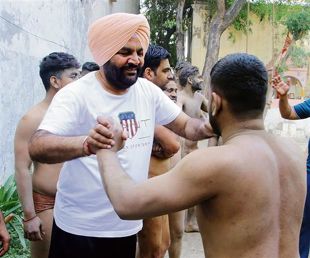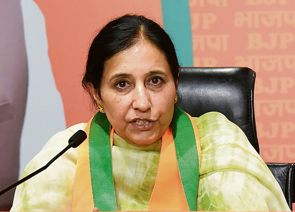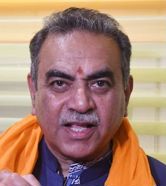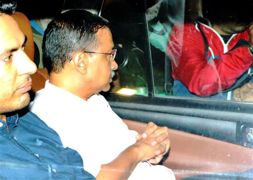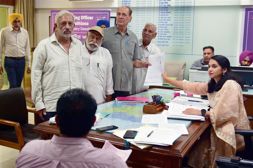Jaspal Singh
Following the foot-steps of Giani Gurdit Singh of Mera Pind fame, now an England-based Punjabi writer Sukhdev Sidhu has come out with an equally passionate though less ambitious account of folk-life of the Doaba region of Punjab titled Mere Apney. Apart from India, it has been published in Lahore as well.
Sukhdev’s village is Udhowal near Jalandhar, not Gianiji’s Mithewal of Malwas. The time is the 1970s. Incidentally, he migrated to England in his early twenties. Hence his narrative is imbued with nostalgia of the vibrant village life that once existed there. Udhowal hardly has a family that does not have a member abroad. In most of the houses, only the old people are staying put as custodians of property.
Earlier Sukhdev’s family migrated from Montgomery (Shahiwal) in Pakistan during the Partition riots to go back to their native Udhowal to begin all over again. Though he was born after the Partition, he had heard many stories about the life and culture of the Bar area of West Punjab from his elders. So the book begins from here. Then the author adopts his own literary strategy to foreground his narrative details.
He selects certain village characters including a ‘dog’, an ‘old cot’, ‘the ancient river’ and the village ‘banyan tree’ in addition to human characters to depict his sensitive impressions. The favourite characters in these memoirs are Bhua Channo, Taya Sardara, Lauli the herder Vadda Sadhu Singh, Ma Barkate, and Gurdas Ram Alam. Some spiteful characters like Swarna Fauji and Mame Putar are also included to add spice to the narrative.
Bhua Channo was a widow who lived her entire life at her parents’ house. She learnt how to sew clothes and would work for everybody irrespective of the caste considerations. She would recite Gurbani while working on the sewing machine. But in course of time, she fell a victim to some kind of neurosis and did many funny things in the village.
Taya Sardara was really a wayward character. He was quite well-built and a heavy drinker. He committed murder for which he had to undergo a jail term, which could not tame him in any manner. He had a unique way of showing affection for his nephew. He would brag that when the latter was born, he made the entire village including the donkeys drunk.
Lauli, the village herder from the family of scavengers was an interesting character. Besides herding the cattle, he could do scores of other odd-jobs. He reminded one of Labhu of Mulk Raj Anand. Lauli was not afraid of anything and could go into the graveyard even at night while many children were mortally afraid of it. Since he did not attend the school, other children would envy him. Schools in those days were terrifying places because teachers were very cruel.
Vadda Sadhu Singh from the water-carrier’s caste was expert diver-cum-well digger. His younger brother was employed in Chandigarh, who migrated to America, studied there and became a professor of journalism in California University. He inspired many a young boy of the village.
Ma Barkate, a Muslim was a midwife in the village. Her family was made to stay in the village during the Partition riots. She adopted a Sikh name Harnam Kaur, but people addressed her as Ma Barkate throughout.
Delinquent characters too receive full attention of the author. But last character Gurdas Ram Alam, a Punjabi poet from Bundala Manjki has been depicted in great detail. Sukhdev came in contact with him when he was a college student at Jalandhar. Alam, the revolutionary poet immensely impressed him. In early seventies of the last century, Naxalite Movement was at its peak in Punjab and Vietnam War was being fought. In France, May 1968 had just happened. In New York, London, Paris, Bonn, Tokyo and in several Indian towns, angry young men took to the roads against American imperialism.
Shiv Kumar Batalvi, the renowned Punjabi poet visited England. Unfortunately, his visit coincided with Alam and on certain stages both the romantic and the revolutionary poets were together. Workers and students constituted the audience. They craved for poems of revolution and not of passion, pain and separation that Batalvi excelled in. Alam was the hero of the show, overshadowing the great poet. Even in Punjab, Batalvi met similar audience at a few places. He was completely disappointed, sinking himself into the goblet, after having reached the pinnacle of glory. Today, Alam is nowhere, though Batalvi remains one of the greatest.
Mere Apney unfolds a cultural panorama of the Doaba region in a pleasant racy style. Copper Coin Publishing, Ghaziabad too has tastefully presented the paperback edition of the book.





















